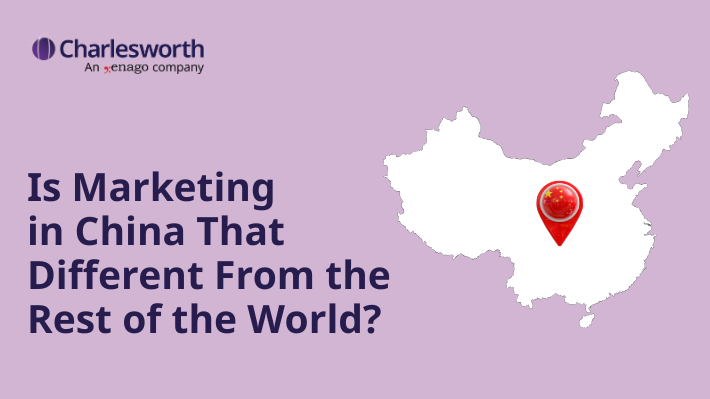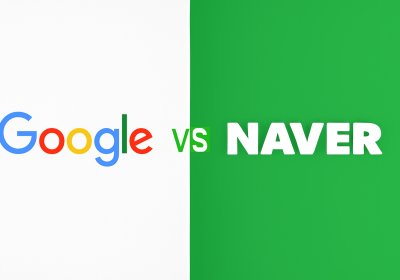Is Marketing in China That Different from the Rest of the World ?

Is Marketing in China That Different from the Rest of the World?
China’s digital landscape leads globally, with 1.051 billion internet users (74.4% penetration, CNNIC 2023) and the world’s largest e-commerce market ($2.8 trillion, 2.5x the U.S.). While offering immense potential, its unique ecosystem—distinct platforms, cultural norms, and strict regulations—demands tailored strategies. This guide equips international brands and SMEs with actionable insights to navigate China’s complexities.
The Growth of the Digital Market in China
China’s digital market has seen exponential growth in recent years. Mobile payment penetration hit 89% in 2023 (vs. global 47%), with Alipay and WeChat Pay processing $60 trillion annually—powering a demand for seamless digital experiences. The country has embraced technology at an extraordinary pace, which is reflected in the sheer size of its digital ecosystem. As of 2023, China had over 1.05 billion internet users, accounting for about 20% of the global internet population. The rapid rise of smartphones, increased internet penetration in rural areas, and the growing number of digital services have all played a role in this expansion.
China’s e-commerce market, valued at $2.8 trillion in 2023 (Source: eMarketer), is the largest globally—2.5 times the size of the US market ($1.12 trillion) and surpassing the combined markets of the UK, Germany, and Japan. The dominance is fueled by mobile-first consumers, with 89% of transactions completed via smartphones. The boom in mobile payments, particularly through platforms like Alipay and WeChat Pay, has facilitated seamless shopping experiences for consumers. The country’s digital economy is projected to exceed $1.2 trillion by 2025, driven largely by mobile commerce, online advertising, and digital entertainment.
Chinese Audiences Adapting to Digital Strategies
China’s digital ecosystem dominates globally with 1.051 billion internet users (74.4% penetration, CNNIC 2023) and a $2.8 trillion e-commerce market—2.5 times larger than the U.S. Hyper-engaged consumers spend 90+ minutes daily on Douyin (TikTok), where 30% of video views drive purchases (QuestMobile), while live-streaming commerce sees 45% product discovery and 25% instant conversions. Success here demands localized strategies: adapting to platforms like WeChat/Douyin, respecting cultural norms (guanxi, symbolic visuals), and complying with strict regulations. For international brands, mastering this trifecta unlocks the $1.2 trillion digital economy opportunity projected by 2025.
One of the most notable aspects of Chinese digital behaviour is the preference for all-in-one apps like WeChat, Douyin (the Chinese version of TikTok), and AliPay, where users can chat, shop, make payments, and engage in entertainment all in one place. This level of integration in digital life has created a consumer environment that thrives on convenience and personalisation, making it crucial for brands to meet Chinese consumers where they are already active, rather than relying on traditional forms of media.
Why Marketing in China Is Different
Marketing in China differs significantly from other global markets due to several factors, including the country’s unique digital ecosystem, cultural differences, and regulatory environment. Here are the main reasons why marketing strategies need to be tailored to the Chinese market:
- Different Platforms and Digital Behaviours: Different Platforms and Digital Behaviours: Unlike Western markets where platforms like Facebook, Instagram, and Twitter dominate, China has its own set of digital platforms. Platforms like WeChat, Baidu, Douyin, Weibo, and Xiaohongshu (Little Red Book or RedNote) have a far greater influence in China than their Western counterparts. This means brands need to tailor their content for these platforms and understand the user dynamics of each.
- Cultural Nuances: Chinese consumers respond well to content that reflects national pride, tradition, and social harmony, and they value convenience and customisation. For example, Coca-Cola’s Spring Festival campaign used the “福” character and zodiac-themed packaging, boosting sales by 60% year-on-year—showing the power of culturally resonant marketing.
- Government Regulations: The Chinese government has a heavy hand in regulating both content and digital advertising. Policies on censorship, consumer protection, and advertising practices often differ significantly from those in Western markets. This requires international brands to navigate a more complex and regulated marketing environment.
Social Media Platforms in China: Key Stats
The Chinese social media landscape is vastly different from the West, with platforms tailored to local consumer needs. Below is a table summarising some of the most popular social media platforms in China and their user bases:
| Platform | Monthly Active Users | Key Features |
| 1.26 billion | Messaging, social networking, payments, mini-programs | |
| Douyin (TikTok) | 600 million | Short-form video content, live-streaming, e-commerce |
| 600 million | Microblogging, influencer marketing, trending topics | |
| Xiaohongshu | 200 million | User-generated content, shopping, lifestyle |
| Baidu | 1.5 billion | Search engine, Baidu Baike (Wikipedia equivalent), online advertising |
These platforms are essential to marketing in China, and understanding how to leverage them effectively is key to reaching local consumers. While platforms like WeChat dominate in terms of communication, social networking, and payments, Douyin is a major player in the short-video and e-commerce spaces.
Cultural Differences
Cultural understanding plays a critical role in Chinese marketing. There are a few key cultural nuances to keep in mind:
- The Importance of Guanxi: Guanxi, which refers to building relationships and networks, is a cornerstone of Chinese society. This means that word-of-mouth marketing, influencer marketing, and leveraging local networks are critical strategies for success in China. In addition, Chinese consumers tend to trust recommendations from family, friends, and key opinion leaders (KOLs) more than traditional advertising.
- Visual and Symbolic Content: Chinese consumers are highly visual, and colours, symbols, and imagery play a significant role in advertising. For example, red is considered a lucky and prosperous colour, while white is often associated with mourning. Brands must tailor their visuals to local preferences to ensure they connect emotionally with the audience.
- Festivals and Holidays: Chinese festivals like Chinese New Year, Singles’ Day, and Mid-Autumn Festival are key moments for marketing. Special offers and themed campaigns during these periods can greatly boost engagement and sales. For instance, during the 2023 Tmall Double 11 event, total transactions reached 540.3 billion yuan, with over 500,000 brands participating (Source: Alibaba).
Marketing Laws in China
Marketing in China also requires compliance with strict government regulations. The Chinese government enforces strict rules on content, particularly around sensitive topics such as politics, religion, and morality. For example, online content that promotes Western ideologies or includes politically sensitive material is heavily censored or removed. Additionally, brands must adhere to advertising standards and consumer protection laws to avoid penalties.
Furthermore, data privacy and cybersecurity laws are critical. The Personal Information Protection Act (PIPL) requires companies to collect data after obtaining explicit consent from users, with fines of up to 5 per cent of turnover for non-compliance. China’s Cybersecurity Law mandates that companies must store user data within China’s borders, which can be a challenge for international companies. Companies must also be transparent about how they collect and use consumer data.
The Importance of Localisation
Localisation is essential for success in China. Simply translating content or using generic global strategies will not resonate with Chinese consumers. Brands must localise their messaging, product offerings, and even customer service approaches to align with local tastes and behaviours. For example, Airbnb rebranded its Chinese name to “爱彼迎” (meaning “welcome each other with love”) and tailored its platform to highlight local experiences and customer service, helping it connect better with Chinese users.
Localisation goes beyond language and includes adapting to cultural norms, understanding local consumer preferences, and using region-specific platforms. For example, while international brands might rely on Instagram or Twitter for marketing in the West, Chinese consumers spend most of their time on platforms like WeChat and Douyin. Adapting your content to fit the preferences of each platform is a must.
Conclusion
Marketing in China is indeed different, but it also presents significant opportunities for international brands. To succeed, it’s essential to understand the unique digital landscape, the local audience’s preferences, and the regulatory framework that governs online activities in the country. By embracing the importance of localisation, understanding the cultural differences, and complying with local laws, international brands can successfully navigate the complexities of marketing in China.
At Charlesworth, we specialise in helping brands navigate the complexities of marketing in China. Whether it’s localising your website, marketing collaterals, or creating targeted campaigns for Chinese platforms, we can guide you in building a successful strategy for the Chinese market. Contact us today to learn more.


